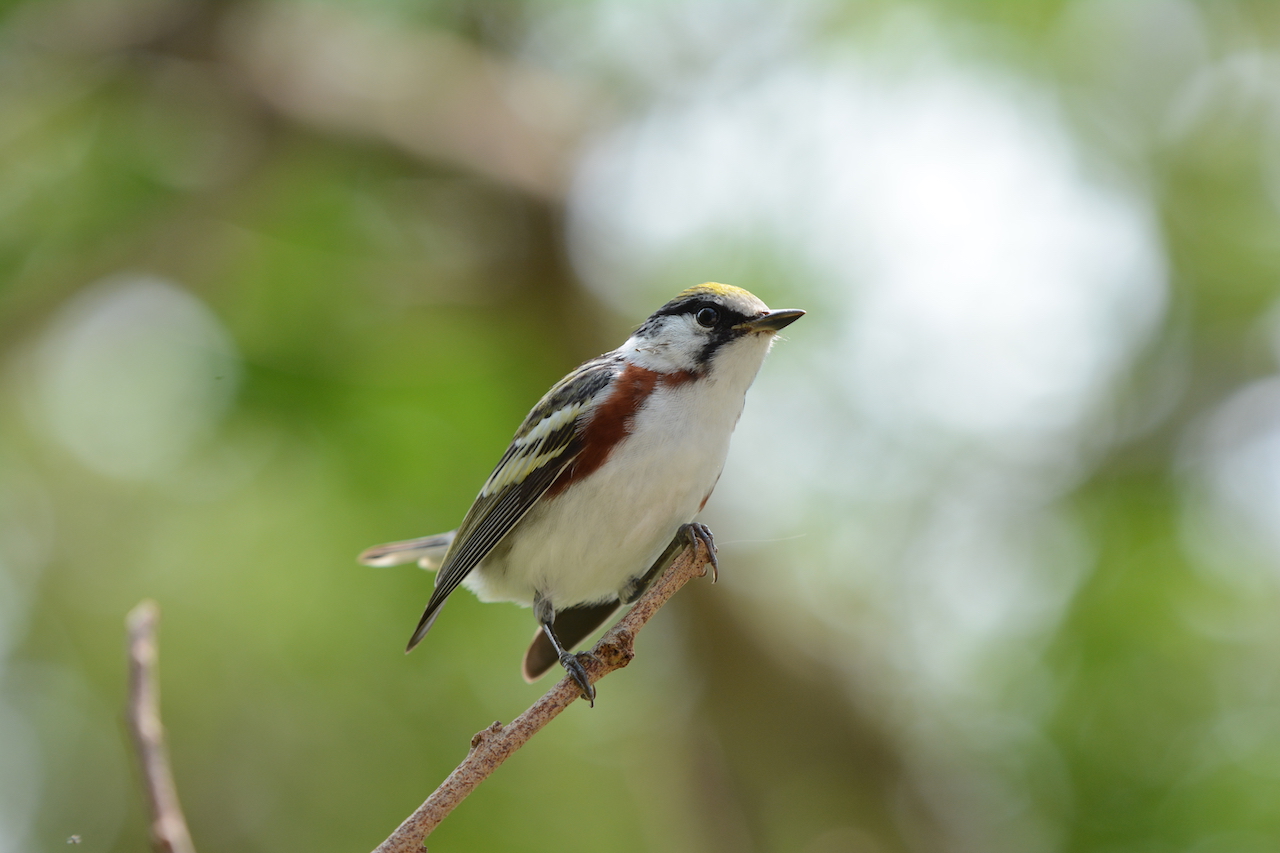Chicago, Houston, and Dallas top the list
Most dangerous cities
| MOST DANGEROUS CITIES FOR BIRDS: SPRING MIGRATION |
MOST DANGEROUS CITIES FOR BIRDS: FALL MIGRATION |
|
|
|
|
|
|
|
|
|
|
|
|
|
|
|
|
|
|
|
|
“Chicago, Houston, and Dallas are uniquely positioned in the heart of North America’s most trafficked aerial corridors. This, in combination with being some of the largest cities in the US, make them a serious threat to the passage of migrants, regardless of season,” notes study lead author Kyle Horton, a Rose Postdoctoral Fellow at the Cornell Lab.Although bird migration in spring and fall lasts for months, the heaviest migratory activity occurs during the span of just a few days. For example, a top-ranked light-polluting city can expect half of its bird-migration traffic to pass through over seven nights spaced out during the season; these nights are unique for each city and depend upon wind conditions, temperature, and timing.

Chestnut sided Warbler by Kyle Horton
“Now that we know where and when the largest numbers of migratory birds pass heavily lit areas we can use this to help spur extra conservation efforts in these cities,” adds study co-author Cecilia Nilsson, also a Rose Postdoctoral Fellow at the Cornell Lab. “For example, Houston Audubon uses migration forecasts from the Lab’s BirdCast program to run ‘lights out’ warnings on nights when large migratory movements are expected over the city.”
Horton also notes that, given an estimated quarter-million birds die from collisions with houses and residences every year, even homeowners in these most dangerous metro areas for migrating birds can play an important role.
“If you don’t need lights on, turn them off,” states Horton. “It’s a large-scale issue, but acting even at the very local level to reduce lighting can make a difference. While we’re hopeful that major reductions in light pollution at the city level are on the horizon, we’re excited that even small-scale actions can make a big difference.”
Support for this study came from the Edward W. Rose Postdoctoral Fellowship, Marshall Aid Commemoration Commission, the Leon Levy Foundation, and the National Science Foundation.
Reference:
K. G. Horton, C. Nilsson, B. M. Van Doren, F. A. La Sorte, A. M. Dokter, A. Farnsworth. Bright lights in the big cities: migratory birds’ exposure to artificial light. Frontiers in Ecology and the Environment. 2019.




